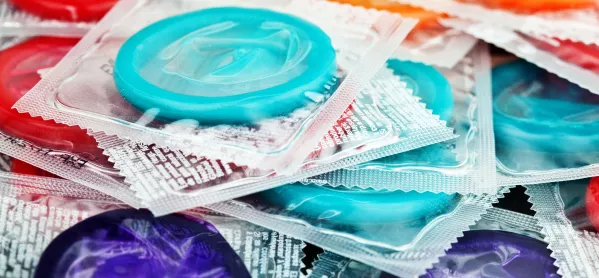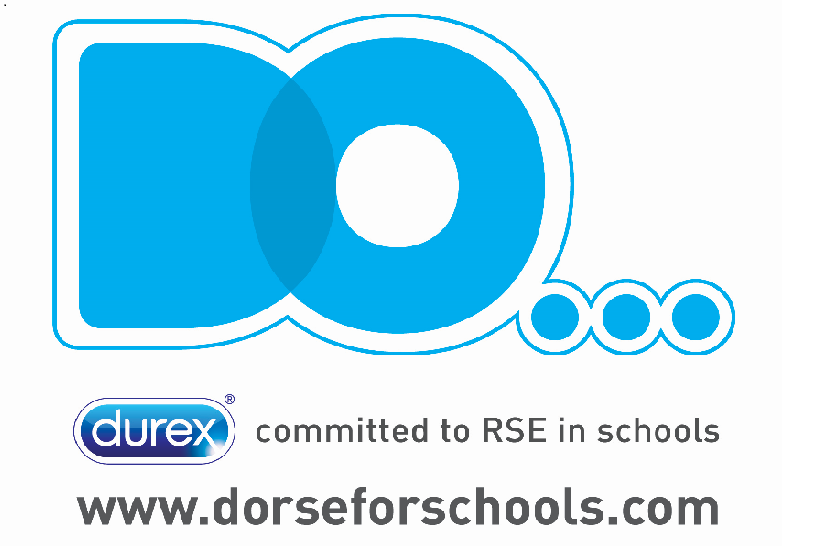10 key points to teach pupils about condoms

Condoms are great. What other form of contraception is capable of delivering such entertainment in the classroom? And, of course, they are effective in blocking disease transmission and preventing pregnancy too.
If you’re a teacher delivering any form of sex education, you’re going to work with condoms at some point. So get familiar with condom dos and don’ts, prepare for the student questions, get ready to put a condom over the tap to show how much water it can hold before bursting, dig out the blue plastic condom demonstrator - and have some wet wipes so they can clean the lube off their hands, because they will smear it on each other’s hair otherwise.
And wash away any embarrassment you might be feeling because the students, despite their crude comments, will be feeling the same but much, much more.
There are other things that you can prep yourself for too: know about the myths, misconceptions and mistakes that happen with condom use and condom training that we can try to work on in class. Here are some of the common queries and conversation topics you may face or have to bring up.
Some condoms fit better than others
There are variations in the fit of condoms and trying different shapes, and sizes, before using the condom in earnest, is necessary for condom confidence. Many condom boxes have a base width on the back. Show students this and if you can get some variety of sizes on display this is really useful too. Point out the CE mark too and explain how important it is as a mark of quality.
Make sure that once it’s on, it stays on
The blue plastic demonstrator is great for learning how to put a condom on an erect penis but terrible for showing what happens after ejaculation when the penis goes flaccid.
Indeed, a common problem for inexperienced condom users is the point of withdrawal, when the condom could slip if not anchored by hand. This is worse if the fit isn’t good and the size change from flaccid to erect can vary significantly.
It’s also worth explaining that sometimes the penis can become flaccid during sex and it’s important to check it has remained on if this occurs.
Put the condom on the right way the first time
It’s easy to put the condom on the penis upside down and then realise because it won’t unroll smoothly. Students may also think it’s ok to turn it around but, because there can be germs from an STI at the tip of the penis, there is a risk that could be transmitted once the condom is turned around and placed back on, so make sure they know to use a new condom if this happens.
However, it’s also worth making it clear to students that if they only have one condom then it’s better to use that than no condom at all.
Different condoms do different things
Get a box of condoms set up that includes different colours, textures, shapes, teatless, flavoured and extra strong. Discuss why someone would use a particular variety. Be ready for some students to be convinced there are norms of sexual activity, and those are very narrow. Some may never have heard of anal penetration, or consider this as only something that happens between men and you may have to explain that this is not the case.
It’s also worth explaining how condoms can act as ‘dams’ that can be used as a ‘latex barrier’ for performing safer oral sex on vulvas, anuses, or flaccid penises
This could also be a time to use teachable moments to explore the concept of consent by looking at what happens within any sexual encounter as well as agreeing to sex generally. Be ready to provoke the discussion of how two people discuss and negotiate the difficulty of finding out what each other likes and wants to try.
Sensitivity and condoms
If someone doesn’t bring this up, raise it yourself because a number of students may be thinking it. Some people find the sensitivity is decreased as the condom acts as an extra layer over the penis. Others like this, however, and this effect could be due to the condom fit. Sensitivity and sensation will be increased by gel charging, and it’s worth demonstrating this on the trusty blue plastic penis.
Take a fresh condom, unroll it a touch, and squirt in a small amount of condom-friendly lubricant, then fit it as usual. Show how the gel surrounds the head and explain that it increases sensitivity. Also make sure it’s a natural fit condom that is flared to allow more space at the head of the penis as this allows for gel space.
Anyone can buy condoms
It may be the case that some students don’t realise that anyone can buy condoms. This may be due to a social stigma that a woman should not be interested in sex, or that it’s a male responsibility, or that only certain people need to use them. Be prepared to bring these issues into the open and make it clear that anyone and any type of relationship can buy and use condoms.
It can be a moment to share together
Discuss the idea that putting on a condom can be something to be shared, part of sexual play and pleasure, and hence reducing the “oh my god, how embarrassing, I need to hide what I’m doing” factor.
Do warn them, though, that a partner with long fingernails, whether male or female, could be risky at this moment, for the sake of comfort and the safety of the condom!
Not all lubricants are the same
It’s worth a discussion on why you might use lube and the different types available and their different uses, including what can be used as lube. For example, do not use latex condoms with oil-based lubricants, as it says on the box.
This is because the latex can become brittle and tear when in contact with oils. In addition, oil-based lubes, if they get inside the anus or vagina, can provide a breeding ground for infections.
What else can damage condoms?
You could ask students if they would use margarine as part of sex. (Most students react in disgust). But what about whipped cream? Could you imagine playing with whipped cream as part of sex? A few shouts now, but they’re getting a bit more on board with this as an idea. What about massage oil? Now they might start to think seriously about how they could inadvertently damage a condom in use.
Agree a common framework of language
If you’re going to work with students learning about condoms, you need to be comfortable with the language (or at least able to fake it convincingly). The students, even if they’re not trying to be offensive, will probably use rough slang. It’s worth exploring their language, pointing them in the direction of better, more precise terms, but not taking offense at what, to them, is their only vocabulary for the topic.
Furthermore, it’s a good idea to get agreement among the class about the language used to discuss these topics, to try and ensure there is no unnecessary embarrassment or awkwardness caused.
All in all, there is a lot that students need to know. The key is to be prepared for what will likely be asked and be ready to be blunt, factual, literal and detailed in your answers. RSE is a vital subject and there is so much value in them knowing as much as possible.
The following tale underlines why. A colleague was working at another school when a couple in the sixth form had a baby. They both had a mild learning difficulty, but had tried to be responsible and were very shocked when their relationship produced a baby, because, as they said, “We put the condom on the banana”. Yes, literally, every time they had sex they put a condom on a banana as they had been shown how to do.
Diana Whitmill is a teacher of science and PSHE at The Royal School for the Deaf, Derby.
For expert-led support and resources to facilitate the teaching of inclusive relationships and sex education in schools, visit DO…
